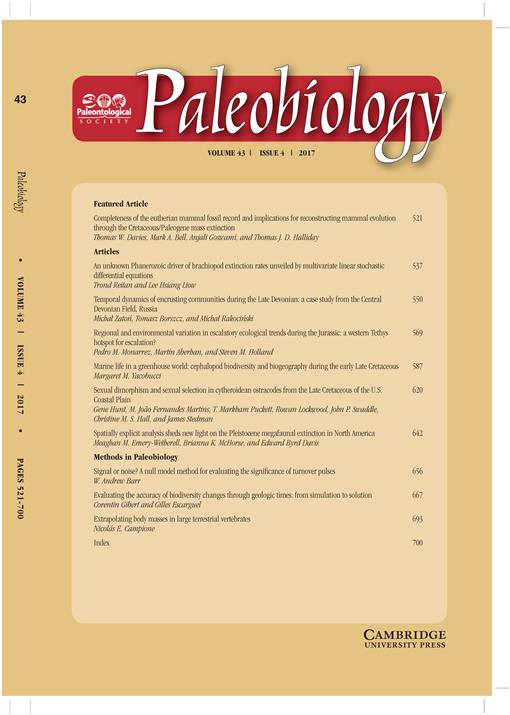Sexual dimorphism is common in many extant animals, but it is difficult to demonstrate in fossil species. Working with material from the Late Cretaceous of the U.S. Coastal Plain, we herein analyze sexual dimorphism in ostracodes from the superfamily Cytheroidea, a group whose extant members have males that are relatively more elongate than females. We digitized outlines of more than 6000 individual ostracode valves or carapaces, extracted size (area) and shape (length-to-height ratio) information, and used finite mixture models to assess hypotheses of sexual dimorphism. Male and female clusters can be discerned in nearly all populations with sufficient data, resulting in estimates of size and shape dimorphismfor 142 populations across 106 species; an additional nine samples are interpreted to consist only of females. Dimorphism patterns varied across taxa, especially for body size: males range from 30% larger to 20% smaller than females. Magnitudes of sexual dimorphism are generally stable within species across time and space; we can demonstrate substantial evolutionary changes in dimorphism in only one species, Haplocytheridea renfroensis. Several lines of evidence indicate that patterns of sexual dimorphism in these ostracodes reflect male investment in reproduction, suggesting that this study system has the potential to capture variation in sexual selection through the fossil record.
How to translate text using browser tools
22 August 2017
Sexual dimorphism and sexual selection in cytheroidean ostracodes from the Late Cretaceous of the U.S. Coastal Plain
Gene Hunt,
M. João Fernandes Martins,
T. Markham Puckett,
Rowan Lockwood,
John P. Swaddle,
Christine M. S. Hall,
James Stedman
ACCESS THE FULL ARTICLE





